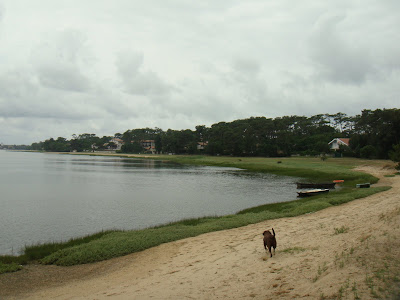







Today our quite little country town was transformed into a hussling and bussling center. It was market day! The streets in the center of town were shut down and filled with just about every kind of vendor you could think of. There were the sausage vendors, the cheese vendors, the fish vendors, the flower vendors, the olive vendors, the fruit and veggie vendors, the foie gras and confit vendors, the wine vendors... The list goes on and on with each one offering delicious and hard to resist samples of their products, I had no choice but to try a little of everything. I ended up walking away with several juicy goodies, lots of fruit and veggies, goat's cheese (no idea what kind, as there were so many), baguette, charchuterie and of course flowers (couldn't resist). The merchant I bought my cheese from also sold sausages and was nice enough to throw in a bunch of odds and ends for Rypien, he was so happy. I also stopped at the butcher for some dog bones so I think the little guy is set for the next few days.
I love market days, certainly one of my favourite parts about living in France. They're always so colourful and lively and packed with people. One thing I have noticed about the French as a result of these markets is that they tend to be rather pushy – they're constantly jostling and budging in front of you in check-out line-ups (kinda annoying). This behaviour is also true of their road/driving antics, as no one seems to like to let people merge or switch lanes here in France. This isn't exactly a huge hinderance, just a simple observation. I actually don't really mind all that much cause I'm usually having so much fun just being there. All part of the experience.
















































